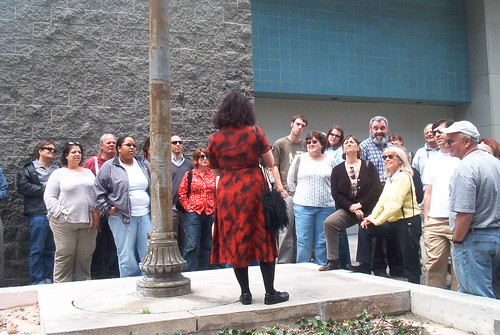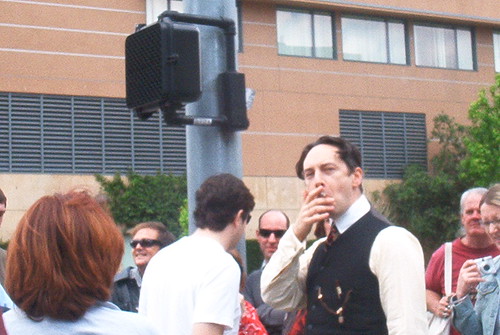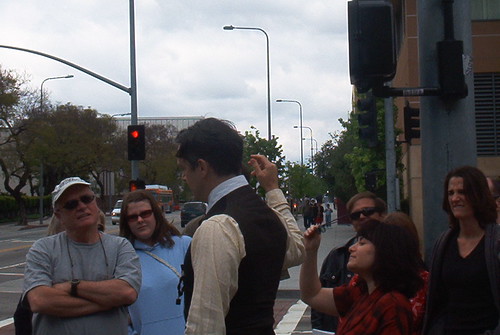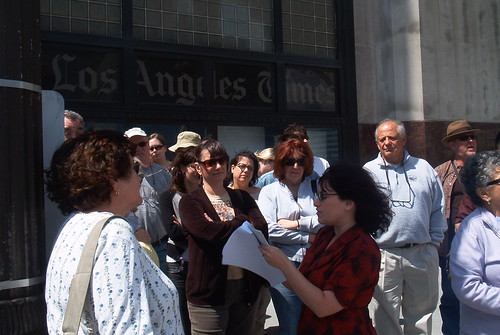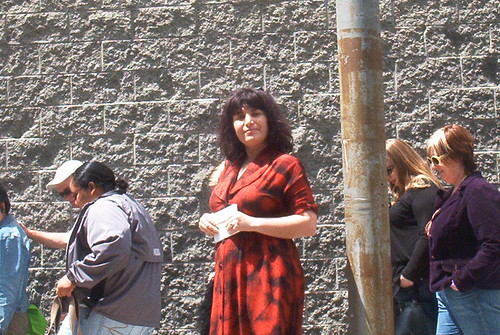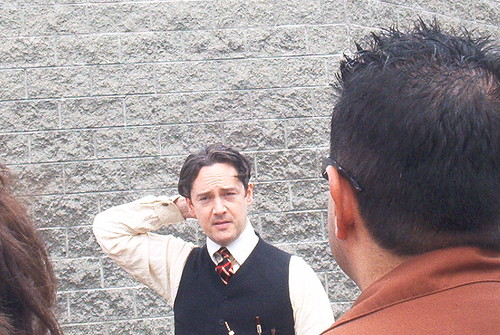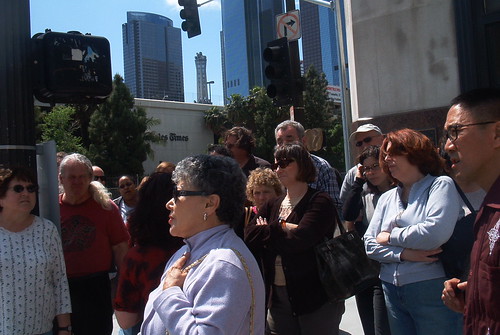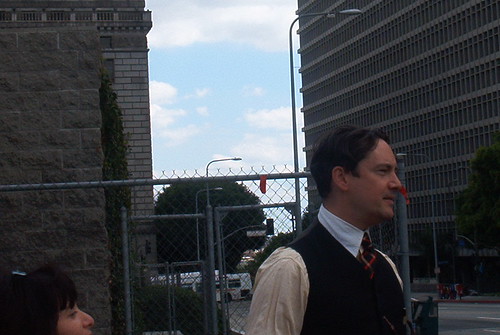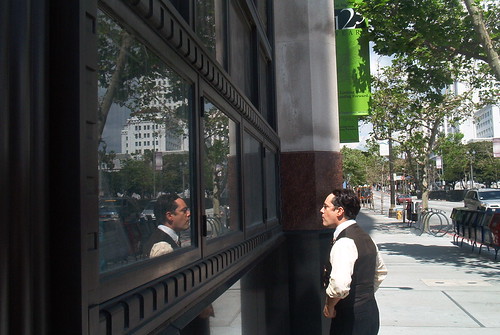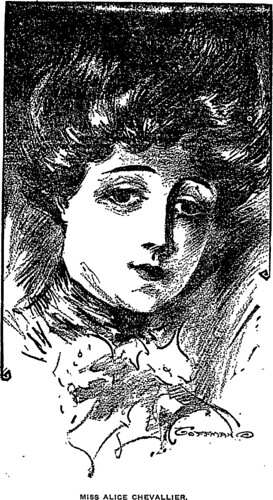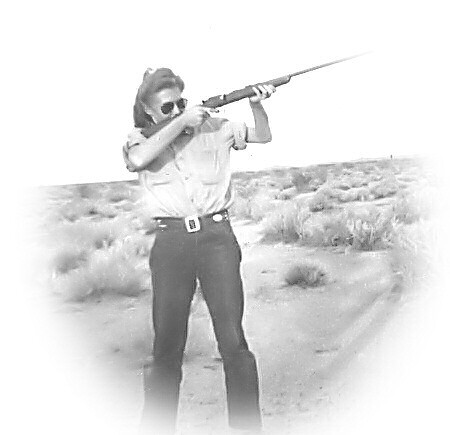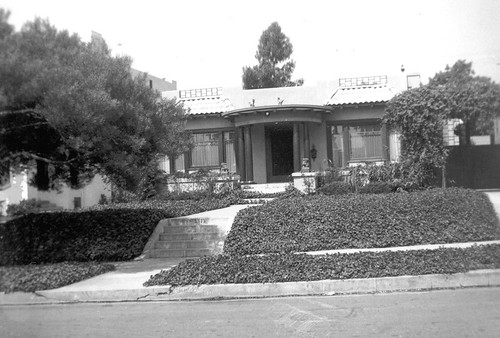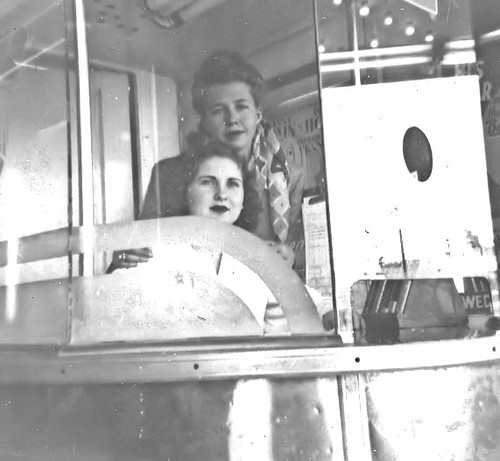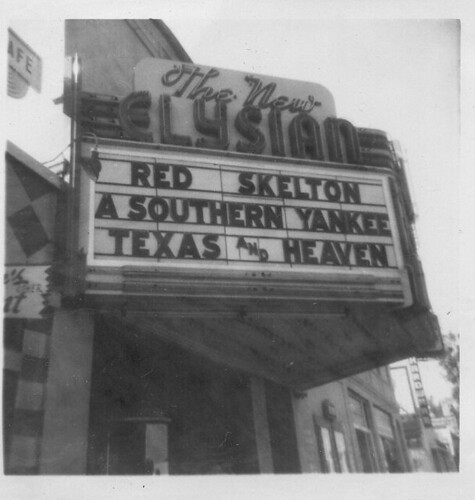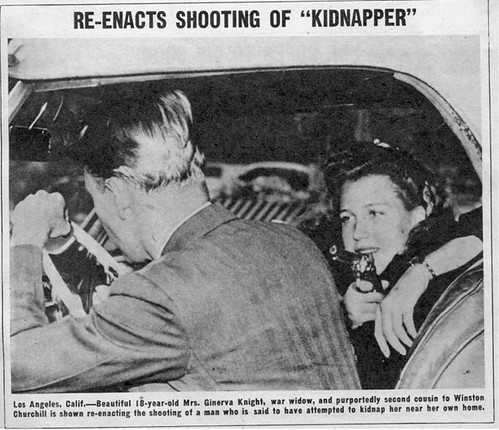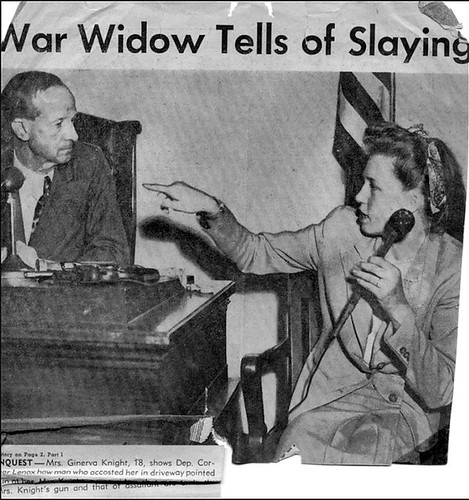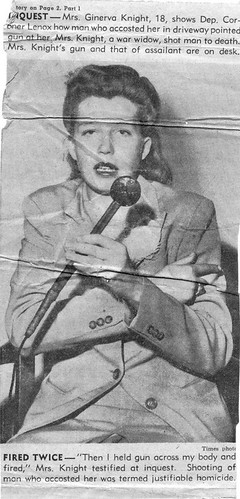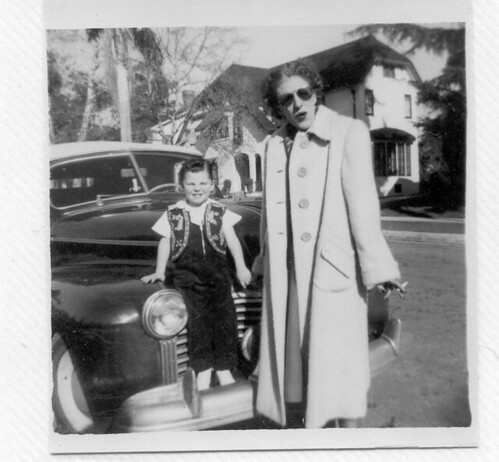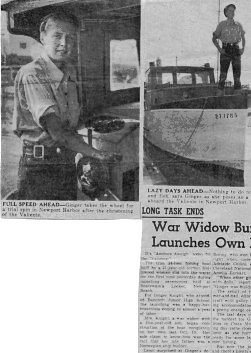Lea Lion of the Los Angeles Downtown News rode along on the first Nightmares of Bunker Hill tour, and wrote a cool and moody piece about it in this week’s paper.
Nathan and I were appropriately thrilled when the legendary Gary Leonard took our picture, and we even made the front page (under the fold). You can pick up a copy most anywhere in the middle of LA, or read it online.
Thanks, Lea!
*****
Murder, an Acid Attack and More Downtown Fun ‘Nightmares of Bunker Hill’ Bus Tour Finds an Audience by Lea Lion
I sneak a peak at the other passengers on the bus and wonder why they are really all here. It is Easter Sunday morning and we’re idling in a deserted Lincoln Heights parking lot, waiting for a couple of latecomers to arrive.
Of course, I know exactly why we’re here, but there is still something a little strange about the fact that a busload of people have elected to pay $47 a head to devote five sunny Sunday hours to a tour of Downtown’s most notorious crime scenes of the past century. We’ve gathered for the provocatively titled tour “Nightmares of Bunker Hill,” and as we wait, I start to feel a little suspicious of my fellow crime bus riders and their hunger for tales of long-ago murder and mayhem. The whole thing reeks of a sensational headline, maybe something like, “Maniac Trails Reporter Home From Crime Tour!”
I’m trying to keep my paranoia in check, when the man sitting across the aisle, a fellow solitary rider, leans over and introduces himself. He’s Victor de Anda, a West L.A. native who works in the film industry. Soon he slides over to the comfy coach seat next to mine and starts telling me about the Jack the Ripper-themed walking tour he caught on a recent London vacation.
Eventually, the stragglers show up, and de Anda’s story of murdered prostitutes gives way to a bus rolling along the narrow, bungalow-lined streets of Lincoln Heights into Downtown. We stop in front of a police car graveyard on the outskirts of Chinatown and a man dressed in a 1940s broad-shouldered suit, complete with vest and pocket watch, stands up. This turns out to be tour guide Nathan Marsak, who delivers a rapid-fire account of a turn-of-the-century crime that occurred roughly 50 feet to the right of the bus.
“May 12, 1887,” Marsak states bluntly. He pauses dramatically before continuing. “Imagine a Victorian rooming house – Queen Anne with turrets and gingerbread – right over there.” He gestures towards the parking lot and then dives into the story of a woman who threw a bottle of acid in her lover’s face. Marsak ends the story with a descriptive edict: “Picture him tumbling down the steps grabbing his face.”
Without missing a beat, Marsak’s partner-in-crime and fellow tour guide Kim Cooper launches into another grisly tale. Dressed in a vintage printed dress, Cooper stands at the front of the bus and details the story of the longhaired “Sanchez girl,” who was starved to death by her parents circa 1900. Her ghost is rumored to haunt a stretch of Broadway.
Twisted Sensibilities
Self-professed (obviously) crime buffs, Marsak and Cooper are co-founders of the blog the “1947project” (1947project.com), which last year gained a fair amount of buzz as it documented that year’s most newsworthy crimes – from the heinous to the quirky – in a day-by-day account frequently accompanied by photographs. After completing the full calendar year of 1947, the duo has moved on, or, more accurately, turned back the clock. This year they’re blogging like it’s 1907, and the bus tour is a way both to promote the site and to share their enthusiasm and knowledge.
The year 1907, said Marsak, “fulfilled our giddy enthusiasm for Edwardian-era Los Angeles.” He loudly exhaled a puff of cigarette smoke. “People always go on about the good ol’ days and so forth and so on and we serve as a gentle reminder that there was as much villainy and mayhem and dastardly deeds then as now.”
Marsak and Cooper dig up most of their crime stories from local newspaper archives. According to Marsak, all it takes is a little imagination and a lot of ingenuity.
“The papers were rather circumspect, so you have to learn to read between the lines,” Marsak said. “The ‘yellow’ papers were more sensationalistic, so when you want to get the full story you read the Times and then you have to go down to the archives and go read the Examiner and the Herald.”
Cooper describes her researching technique as “very improvisational.”
“I tend to do it in the witching hour,” Cooper said with a laugh. “I get into the online L.A. Times archive and I start coming up with words that might trigger an interesting story. I’ll use a particular keyword like ‘gruesome’ or ‘ghastly’ or ‘severed’ or ‘weird’ or ‘gun’ or ‘police’ and just see where it takes me.”
The division of labor has Cooper looking through old newspaper files, while Marsak drives around locating historic crime sites and documenting the “what’s there now” aspect. It’s a tactic that has an intriguing tie to modern Downtown Los Angeles – 99 years ago, before the extensive sprawl of the city, most of the action occurred around Downtown.
Cooper and Marsak’s shared fascination dates back to when they met as undergraduates at UC Santa Cruz. In the past, the pair has done a noir-style radio show called “Manny Chavez” and hosted a Black Dahlia-themed bus tour that also included many stops in Downtown. The “Nightmares of Bunker Hill” tour was a quick sell-out, and the duo has scheduled another one for June 10.
“I think Nathan and I both have pretty twisted sensibilities, but we are not dark people,” Cooper said. “We are much more colored by the Addams Family than by Charles Manson.”
Back on the Bus
During the five-hour tour, we do in fact learn that Downtown has an often gruesome past. Surprisingly, a whole slew of sometimes horrific, sometimes humorous acts took place in the early 1900s around New High Street in what is now Chinatown. According to our tour guides, the area was a hotspot for bar brawls, gambling houses and opium dens. It was also the site of at least one gypsy kidnapping and an out-of-control goat (in separate incidents).
Countless brutal murders, fake s
 What, you might ask yourself, did Shriners do before the advent of those little cars and Harley- Davidson Electra Glides? The elaborately costumed men staged precision, close-order drills accompanied by marching bands.
What, you might ask yourself, did Shriners do before the advent of those little cars and Harley- Davidson Electra Glides? The elaborately costumed men staged precision, close-order drills accompanied by marching bands.




